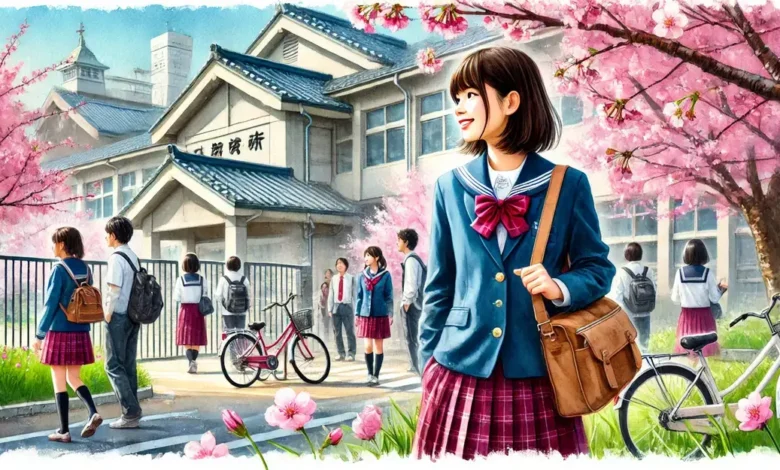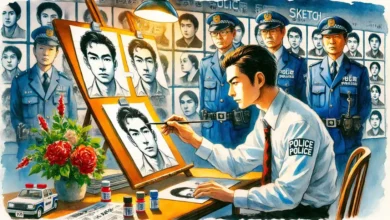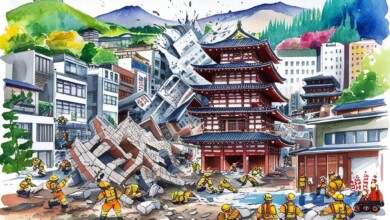High School Student in Japan: Unseen and Exciting Stories

Being a high school student in Japan is a unique and enriching experience that differs significantly from the typical school life in many other countries. Japanese high schools are known for their rigorous academic schedules, strict discipline, and a strong emphasis on extracurricular activities.
From early morning classes to evening club activities, the daily life of a high school student in Japan is both challenging and rewarding. Students wear uniforms, follow a detailed timetable, and participate in school festivals and sports events that foster a strong sense of community and school spirit.
Have you ever wondered what it’s like to go to school in Japan? I’ve found 10 surprising things about regular Japanese public schools. You might find that these schools are very different from the ones you went to when you were younger.
1. Students are not sent out of the classroom by their teachers.
Let’s be honest: kids will be kids. No matter where they come from, some will act up now and then. This is one of many challenges teachers face.
In many countries, if a student misbehaves, they are often sent out of the classroom. But in Japan, this is a big no-no. The Japanese Constitution says that “All people have the right to get an equal education.” So, Japanese teachers don’t like to send kids out of the classroom. They have learned to stay calm and keep teaching, even if a student is being disruptive. This only happens in rare cases, like when a student keeps disturbing the class.
This must be a real test of patience! In Japanese schools, they don’t send kids outside because they don’t want them to miss any part of the lesson.

2. For lunch, everyone eats the same dish, which is served by students.
In Japanese public schools, everyone eats the same meal. This is different from many countries where students can buy lunch or bring their own. In Japan, students learn to eat the same food and finish it on time.
Most Japanese schools don’t have cafeterias. So, students can’t buy their own meals. Sometimes, they can bring homemade lunch boxes if they follow the school’s rules. These “bento” meals usually have rice, vegetables, fish, seaweed, and sometimes chicken. They don’t have unhealthy foods or sweets.
The first time I saw a Japanese school lunch, I was surprised. Students carry their meals from the lunch room to their classmates. They wear white masks, gowns, and bandannas. After lunch, they clean up and return the meal containers. A teacher watches over them. It’s great to see kids learning to help others and keep their area clean at such a young age.

3. In the classroom, students and teachers dine together.
In junior high schools in Japan, teachers and students eat lunch together. They sit in groups with their desks facing each other. This was a big surprise for me because where I grew up, students weren’t allowed to eat in the classroom. In Japan, the classroom is not just for learning. It’s also a place to chat and eat lunch. Most schools don’t have a cafeteria or special places for kids to eat.
Some people might think this is too strict. They might say that kids should be able to eat lunch with friends from other classes. But others might not agree. At lunchtime, kids usually sit in small groups with their closest classmates. This gives them a chance to talk and interact with everyone in their class, not just their best friends.

4. There is no way for students to fail a class.
Does this surprise you? You’re not alone! This might be the best thing a student can get.
In some countries like the United States and the Philippines, students who struggle might have to repeat a grade. But in Japan, no matter how they do on tests or in class, students always move up to the next grade. Even if a student fails all their tests and misses all their classes, they can still be part of the end-of-year graduation. The only time test scores really matter is when students take entrance exams for high school and college.
But this doesn’t mean Japanese kids don’t have to work hard! They study a lot to learn Japanese kanji. This way, they can read the right amount for their age, along with their other studies.

5. There are no janitors on the premises.
In Japan, schools don’t hire janitors to clean. Instead, students do the cleaning. They clean every part of their school, even the bathrooms. Yes, you heard right! Everyone helps clean, including students, teachers, and even the principal. Each person has a specific area to clean.
Every day, Japanese schools have a “souji,” or cleaning time. Some students put a bandanna on their heads and sit quietly for a few minutes before cleaning. This is called “mokuso.” It helps them get ready to clean.
This unique tradition in Japanese schools teaches students more than just cleaning. It teaches them to be responsible. They learn to take care of their school and their community. They don’t know what it’s like to have someone else clean their school for them.

6. Even during school holidays, students and teacher continue to work.
When I was about to leave school for my first summer break in Japan, I said goodbye to a teacher and wished him a happy holiday. He just sighed. I learned that teachers in Japan don’t really get vacations, except on national holidays. They have to keep working to do their jobs at school. Junior high students are part of clubs, which are usually run by teachers. Some activities and sports training keep going even during the holidays.
But wait, there’s more! Students also get a lot of homework to do over their summer break!

7. The identical school bags and indoor shoes are used by all students.
In Japan, students wear special indoor shoes at school. This keeps the school clean and stops dirt from coming in. All students wear the same shoes. This is because Japan values peace and everyone being equal. There’s a saying in Japan: “hammer the nail that sticks out.” This is different from Western ideas about being unique.
In junior high schools, students use the same school bags. These bags have the school’s logo and safety stripes that glow in the dark. This is because many students come home late by walking or biking. Younger students have their own “randoseru,” which are uniform backpacks.

8. Club activities in the morning and after school
Every day, students who are in sports clubs do activities before and after school. For example, sports clubs make kids run a few kilometers each day to stay fit. As you can imagine, this makes students tired and sweaty in class. They have to wake up early and come home late for their club activities. It’s a lot of hard work, but it teaches them to be strong and dedicated!
Clubs are very popular in Japan. Almost every student is in at least one club. They are very proud of their club and always try to do their best.

9. Japanese schools are not as technologically advanced as you may believe.
Japan is known for being high-tech. But if you look inside their schools, you might think differently. They often use pen and paper instead of tech gadgets. But little by little, technology is being used more in schools to help with teaching.
Even though Japan is known for its technology, not all schools have the latest equipment. Some old schools haven’t been updated for many years! Many schools still use old CD players, printers, and fax machines. They use electric fans to keep cool instead of air conditioners. And in the winter, they usually use kerosene heaters instead of central heating.
Instead of whiteboards, lessons are often taught using traditional materials with textbooks as the main focus. But as I said before, technology is slowly being used more. Some schools are starting to use the internet and computers for class presentations.

10. Sleeping beauties are found in classrooms, not castles.
Studying in Japan takes a lot of hard work. Students have homework and projects even during holidays. They also have school clubs and activities on weekends. Plus, they help clean the whole school. Besides doing club activities in the morning and after school, most students go to “juku.” This is a special school where they can study more or learn new languages. They also get a lot of homework every day. This leaves them with little time to rest and sleep.

So, students who are too tired might fall asleep in class. You might be surprised to learn that teachers usually let them sleep. They understand that the students are tired and can’t do much about it. A teacher might wake a student up once or twice, but they usually don’t get in trouble for sleeping.
Visitors can learn a lot about Japanese culture by looking at a regular day in a Japanese public school. If you think this kind of school is right for you or your kids, be ready to work hard. Going to school in Japan isn’t like what you see in anime.
This structured school environment prepares students for life’s challenges. It teaches them to work hard, be dedicated, and aim high. What do you think? Could other countries learn from Japan’s education system, or do Japanese students work too hard?




